ANALYSISTHE FAR-RIGHT WILL NOT BE DEFEATED BY MORAL REBUKE ALONE
The Israeli left has lost more than an election
Israel’s left has been in freefall for 3 decades. It didn’t lose ground in the election; it simply woke up to the mismatch between its political institutions and the electorate

By HAVIV RETTIG GUR 7 November 2022, 5:48 am 32
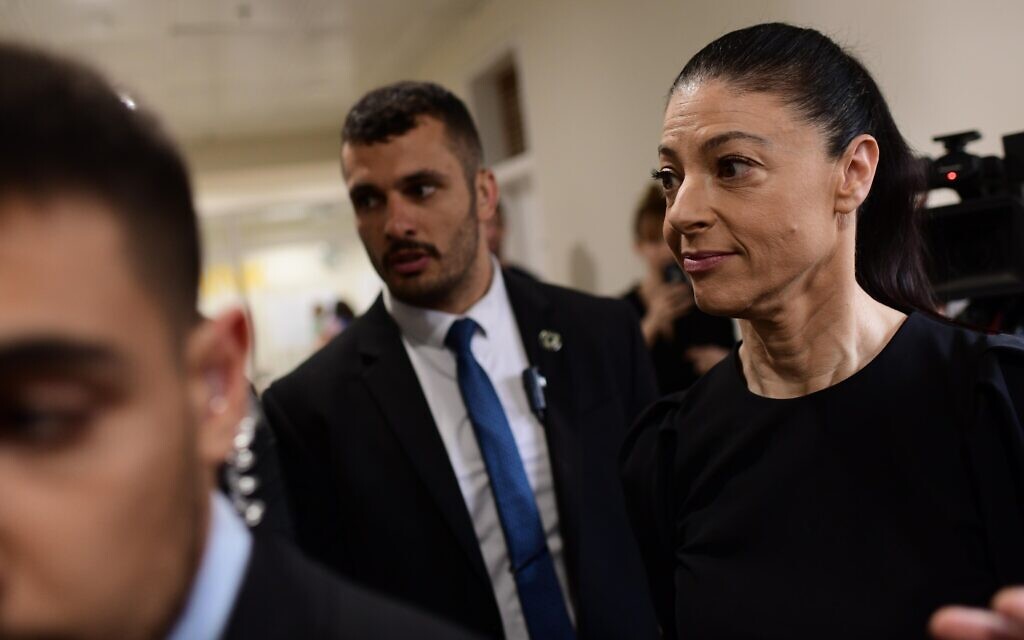
Labor party leader Merav Michaeli casts her ballot at a voting station in Tel Aviv, during the Knesset elections on November 1, 2022. (Tomer Neuberg/Flash90)
A strange thing happened last Tuesday. As the election results came in, two things became clear. One, Netanyahu’s rightist-religious bloc had won a sweeping, unassailable victory. Two, it had done so without fundamentally changing the actual numbers of votes.
Two political parties, progressive-Zionist Meretz and Palestinian-nationalist Balad, failed to meet the 3.25 percent vote minimum required to enter the Knesset, and so cost the anti-Netanyahu half of Israeli politics about 6% of the total votes cast. Netanyahu’s 64-seat majority is almost entirely a function of that threshold mechanic, which caused the disappearance of well over a quarter-million votes below the cutoff.
And there’s the rub. In Balad’s case, the implosion was foreseen for weeks, a function of its decision to run separately from and without even a vote-sharing agreement with the other Arab-majority factions.
The video player is currently playing an ad. You can skip the ad in 5 sec with a mouse or keyboard
In Meretz’s case, the same question was anxiously raised back in September, with calls by activists and center-left leaders for Labor and Meretz to unite to avoid falling below the cutoff. Labor refused, even as all understood that a failure by any one of the small parties in the anti-Netanyahu bloc to clear the threshold would break the four-year deadlock and hand Netanyahu his victory.
All understood and a great many predicted that the anti-Netanyahu camp was headed for failure from the simple fact that so many of its parties hovered at the threshold.
Get The Times of Israel's Daily Editionby email and never miss our top stories
Newsletter email addressGET IT
By signing up, you agree to the terms
In other words, the left and Balad self-immolated, their leadership too devoted to party brands, their own standing and narrow ideological nuances to respond to a clear and present electoral threat. They spoke of Netanyahu’s imminent return to power as a vast danger, but then did everything required to make that outcome more likely.
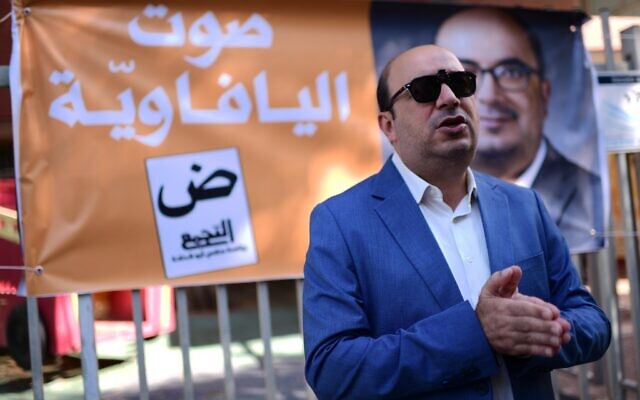
Balad party head MK Sami Abu Shahadeh arrives to cast his vote at a voting station for the Israeli general elections, November 1, 2022. (Tomer Neuberg/Flash90)
Lamentations
While party leaders did what failed politicians usually do — squabbled over blame — the broader left-wing discourse since Election Day has not shown as much clarity as might be expected about the left’s own role in engineering its loss. Instead, there was much lamentation and dire prognostications.
“You want Bibi, but you’ll get Ben Gvir,” Sima Kadmon, the iconic left-leaning political columnist in the Yedioth Ahronoth daily, railed at right-wing voters in her Wednesday column. “You, by your own hand, will bring about the end of the country as we’ve known it.”
ADVERTISEMENT
Celebrities threatened to leave the country. Reports claimed that the word “relocation” was enjoying a spike in Hebrew-language Google searches and social media, along with phrases like “how to leave the country” and “the country is lost.”
The philosopher Asa Kasher, long thought a mainstream figure who helped draft the IDF’s code of ethics, suddenly railed in a Facebook post about the “Haredi mutation” and the “nationalist mutation” of Judaism that had taken over the country and declared himself no longer a Jew, but merely “of Jewish extraction.”
And so it went across the left-wing Hebrew-language social media landscape, until even very left-wing commentators began to express disgust at so much mournful keening.
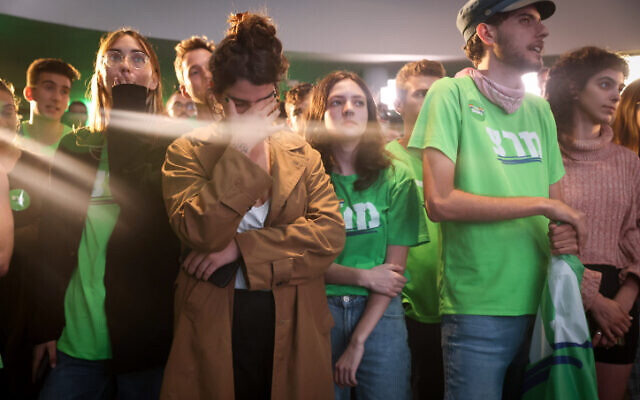
Meretz party supporters react as the results of the Israeli elections are announced, in Jerusalem November 1, 2022. (Flash90)
The long-ago collapse of the Israeli left
To be sure, the pathos is understandable. This is an era that imposes on its contemporaries a permanent state of moral panic.
Some of this is structural: Social media algorithms forge radicalizing echo chambers, the economics of a shrinking journalist class drive a news cycle permanently set to the highest intensity, and so on. Some of it is substantive: A very real and dramatic shift is underway in the politics of the democratic world, including in Israeli politics.
It is hard not to connect the rise of Ben Gvir to the astonishing 41% vote for Marine Le Pen in the French presidential election, to the victory of formerly fascist political elements in Italy in September, or to far-right politics in the US, Canada, Brazil, Hungary and elsewhere. Formerly fringe right-wing actors, now declaring themselves to have moderated, seem on the march everywhere.
ADVERTISEMENT
The reasons have been much discussed in recent years, from dire warnings of a “democratic retreat” to more empathetic diagnoses that suggest these radicalizing electorates are responding to hollowed-out national and transnational institutions that have failed to address their needs and anxieties.
In Israel, as in other countries, the votes for radical political forces come from the edges, from poorer, marginalized communities. In Ben Gvir’s case, many of his voters come from Mizrahi-majority development towns where talk of recent crime waves and rising inter-ethnic tension is a source of daily fear and suffering. It is a vote as much against the 12 years of neglectful Netanyahu governments as against the 18 months of Bennett-Lapid. These forces will not be defeated by moral rebuke alone; the social realities that drive them must be addressed.
Yet even as this rightist shift in Israel fits neatly into broader global trends, there is a unique feature in the Israeli case, one that sets Israel apart and helps explain the surge in apocalyptic discourse on the Israeli left: The Israeli left collapsed long before the Israeli far-right surged into power.

Head of the Otzma Yehudit party MK Itamar Ben Gvir speaks to supporters as the results of the Israeli elections are announced, at the party’s campaign headquarters in Jerusalem, November 1, 2022. (Yonatan Sindel/Flash90)
If one counts Labor and Meretz as “the left” — they’re the only parties in which a majority of voters identify that way — then the decline is easy enough to track.
Labor and Meretz won a combined 44% of the vote in 1992, the year Yitzhak Rabin was elected and launched the peace process with the Palestinians. That number fell to 34% in 1996, ushering in Netanyahu’s first term in power. It then continued falling, in part because of an experimental change to electoral rules (the direct election for prime minister) and in part because of growing disillusionment with the peace process that had become the left’s defining political project. It hit 28% in 1999, 20% in 2003 following the suicide bombing wave of the Second Intifada, 19% in 2006 and 13% in 2009.
Two relatively successful Labor leaders — Shelly Yachimovich and Isaac Herzog (now Israel’s president) — managed to reverse the trend briefly, with 16% in 2013 and 22.6% in 2015. But it didn’t last. In the five-election run of the past 43 months, the left’s fortunes all but collapsed, with it winning 8%, 9%, 6%, 10.7% and 7%.
In other words, the Israeli left didn’t collapse in a sudden, recent rightist lurch of the electorate. It has been in a tailspin for three decades. And three decades of failure suggest a simple, unsparing conclusion that hovers over the anxiety about the election results and the patina of moral panic that accompanies it: The left that just collapsed, in terms of raw political strategy, doesn’t deserve to exist.
No victory at hand
It’s a point few are raising now, perhaps out of misplaced sympathy: Even if the Lapid-led camp had won, it would not actually have won; it would merely have denied Netanyahu a win.
ADVERTISEMENT

Prime Minister Yair Lapid visits the grave of his father, Tommy, on Election Day, November 1, 2022 (Elad Gutman/Yesh Atid)
As many have noted, that’s because two Arab-majority parties, Hadash and Balad, supported voting with Lapid against a Netanyahu-led coalition, but almost certainly would not have voted for a Lapid-led one.
The political strategy of the center-left was, in effect, the hope that a fifth consecutive Netanyahu failure might see an increasingly frustrated religious-right alliance replace him.
Yet this very hope is an implicit acknowledgment of the basic hopelessness at the heart of left-wing politics. If the right had responded to another failure by ousting Netanyahu, that would almost certainly have meant an even larger rightist coalition than the one set to be sworn in later this month. Rightist political forces that oppose Netanyahu, such as the Yisrael Beytenu party or the ex-Likudnik MKs on Benny Gantz’s National Unity slate, are now parked on Lapid’s side of the ledger as they hope and plan for Netanyahu’s political demise. They may well return to their political home after Netanyahu’s exit.
The political left has in effect surrendered all hope of ever returning to power, consigning itself to sometimes, with the help of temporarily disillusioned rightists, fighting the other side to a draw.
The shrinking tribe
It gets worse. Even this goal will soon be out of its grasp. Tuesday’s election highlighted a point long known but adamantly ignored by the left’s political institutions and leaders: It is losing the demographic contest, and quickly.
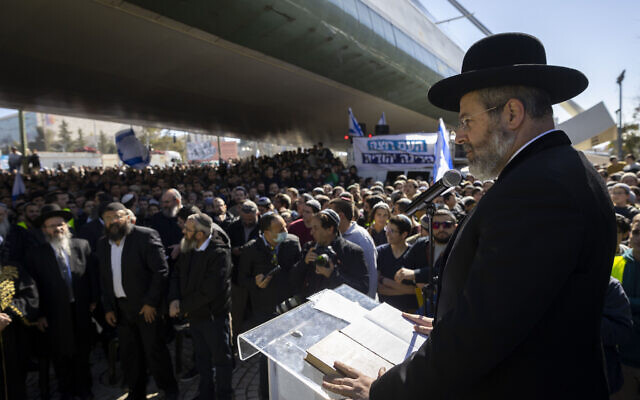
Ashkenazi Chief Rabbi David Lau speaks to religious-Zionist yeshiva students during the ‘Yeshivas March’ against conversion and kashrut reforms, in Jerusalem, January 30, 2022. (Olivier Fitoussi/Flash90)
Israeli politics are built along cultural, religious and ethnic divides often called migzarim, “sectors,” or shvatim, “tribes.” The electoral system itself — a single nationwide constituency with a proportional vote for party lists — is built to reflect and express these tribal affinities as cohesive parliamentary actors.
The specific delineations of the “tribes” are not as rigid as Israeli identity politics suggest; Haredi-Sephardi Shas and traditionalist Likud have exchanged voters over the years, as have Labor and Yesh Atid. But these self-defined boundaries are nevertheless the most basic predictors of Israeli political behavior.
ADVERTISEMENT
Ethnicity is a factor in constructing these tribes. In last year’s election, according to a study by the Israel Democracy Institute, Meretz and Labor’s voters were majority Ashkenazi (70% and 55% respectively), Likud and Shas’s mostly Sephardi (58% and 75%).
So is income. Yesh Atid voters were more likely to have above-average income (46%) than below-average (30%), Likud the reverse (29% above, 46% below).
But by far the most successful predictor of voting patterns is level of religiosity. The center-left is startlingly uniform in its secularism. In the 2021 election, religiously-minded voters (who self-defined as “ultra-Orthodox,” “religious,” or “traditional-religious”) made up just 2.5% of Meretz voters, 6% of Yesh Atid, 7% of Labor, 8% of Yisrael Beytenu, 12% of Blue and White and 14% of New Hope.
The opposite was true on Netanyahu’s side of the aisle. “Less than 1% of Shas and [United] Torah Judaism voters defined themselves as secular, and among the voters of the Religious Zionism party, the figure stands at just 5%.” Likud may be the most religiously diverse Jewish-majority party, with 28% of its voters calling themselves “secular,” 35% “traditional non-religious” and 23% “traditional-religious.”
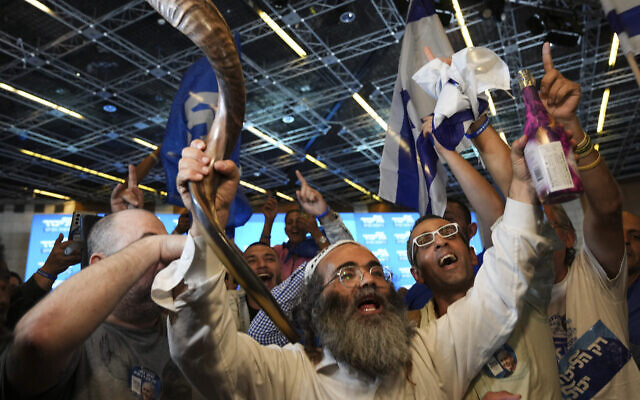
Supporters of Benjamin Netanyahu celebrate the first exit poll results at Likud party headquarters in Jerusalem, November 2, 2022. (AP Photo/Tsafrir Abayov)
And that’s a political cataclysm for the left as it is currently constructed, because some of these ethno-religious tribes are growing much faster than others, almost entirely by the tried-and-true method of having more children.
Two unique features of Israeli society make this a uniquely potent method for political expansion: Israeli society is younger than other democracies, and young Israelis, more than in other democracies, remain loyal to their parents’ political preferences.
Israel is among the youngest populations in the developed world. Its median age is 30.5, compared to America’s 38.1, France’s 41.7 or geriatric Germany’s 47.8. Some 35% of the population is under 20 (compared to America’s 25%), and some 15% of the electorate is under 24, more than any other Western democracy.
And these vast cohorts of young people hail disproportionately from the religious side of the divide. Haredi women, according to Central Bureau of Statistics 2021 data, average about 6.5 children per woman; among religious but not Haredi women it’s 3.9. The average for all Jewish non-Haredi women, including the secular and “traditional,” is 2.5.
And they vote, as noted, like their parents.
“One of the most interesting things about the youth vote in Israel is the rate of conformity to the families they come from,” Prof. Tamar Hermann of IDI and the Open University told Channel 12 last week. “In many other countries we see young people who turn away from or even turn to the opposite [political choices] of their parents, a rebellion against the parents. But the young Israeli is very, very conforming to their family, and the result is that at most we see radicalization from the home they came from. In most homes where there is radicalization, it’s in the same direction but sharper. There’s very little jumping in the opposite direction.”
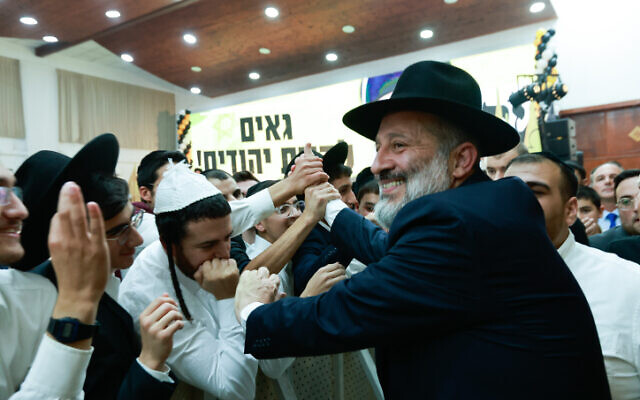
Shas party head Aryeh Deri with supporters as the results of the Israeli elections are announced, in Jerusalem. November 1, 2022. (Yossi Zamir/Flash90)
In fact, these tribal politics stick around even when religion is abandoned. “The interesting thing is that when we interview Haredi or religious young people who left their religious communities, they’ve often changed their relationship to their religious lives, but they remain in the same political camp. It’s as though you can be forgiven for one deviation, but two already makes Friday dinners too difficult.”
(It’s worth noting that as the gap in religiosity widens between Israel and Europe, it is shrinking between Israel and its Arab neighbors. According to the 2019 Arab Barometer survey, fewer than 10% of Palestinians say they are non-religious; among Lebanese it’s less than 15%.)
And the net result of these trends is clear. An IDI survey of under-24 voters found that 71% define themselves as “right-wing.” Less than 11% call themselves “left.”
The tribe that doesn’t know it’s a tribe
The steady decline of the Israeli left’s factions and institutions is thus about more than just the failed peace process. It reflects deep social changes. If the left does not fundamentally redraw the Israeli political map — that is, fundamentally reconceive itself — then Tuesday’s result will be more than a single painful failure. It will be a harbinger of the foreseeable future.
It is this reality that drives the “end of the country as we’ve known it” panic.
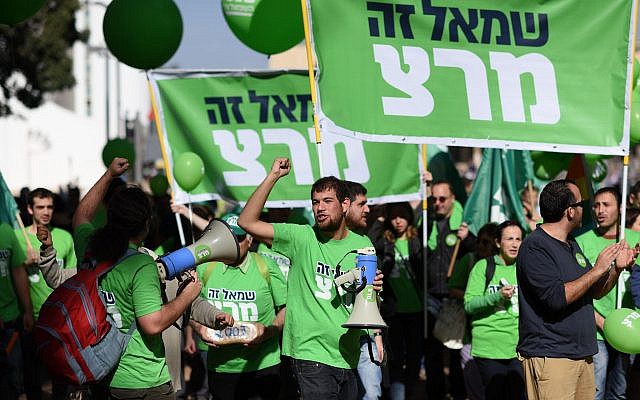
Members and activists of the Meretz party march on Rothschild boulevard in central Te Aviv on January 30, 2015, ahead of the Knesset elections. (Ben Kelmer/Flash90)
Yet this anxiety is not a diagnosis of Israel so much as a statement about the left’s sudden discovery, through a single-percentage-point shift of votes in unlucky ways, of the vast gap it has allowed to grow between its sense of the electorate and the very different reality.
Wednesday’s Israel was not a different country than Monday’s Israel. It was just as tribal, nearly as traditional and just as Mizrahi as when it was ruled by the Ashkenazi left and pursuing secularist, left-wing policies. Those elements of its character were simply not as visible to left-wing elites and institutions.
But as with any failure, once the problem is clear, constructive paths forward emerge. To that end, there are three points of good news for the left in Tuesday’s debacle.
The first is that almost nothing actually happened on the ground. Without diminishing from the valid fears about an incoming government dependent on what were once considered extremist and illegitimate political forces, it’s important to note that the rise of Itamar Ben Gvir was not driven by any significant shift in votes.
In the 2021 election, the two religious-Zionist factions Yamina and Religious Zionism won a combined 499,477 votes. In 2022, the single party running from that migzar, Religious Zionism, won 516,146 votes, just 3% more. Their total share of the vote actually declined, from 11.33% to 10.83% amid a three-point jump in turnout.
This was no Le Pen pivot or Meloni takeover.

Young Religious Zionism supporters pose for a photo next to a cut-out of Itamar Ben Gvir in Kiryat Malachi on November 1, 2022. (Jacob Magid/Times of Israel)
In fact, except on the edges, in poor development towns or in tense, ethnically mixed neighborhoods, most voters didn’t seem to register Ben Gvir’s presence at all, despite the anxiety his candidacy aroused on the left and abroad.
Israeli voters vote their tribes, on Tuesday as before.
The second piece of good news for the left is simply the clarifying effect of disastrous failure. The divide of the left into Labor and Meretz is a distant echo of now irrelevant differences between two leftist factions at the birth of the state, when socialist Mapai and communist-Stalinist Mapam found themselves on opposite sides of the US-Soviet global divide. Much water has flowed under the bridge since then, but the basic institutional divide inexplicably remains embedded in the political psyche of left-wing elites.
After Tuesday, the left can no longer pretend that its old political structures were an appropriate way to build a liberal political camp. While there are differences in self-reported political identity between the two constituencies (in Labor, 24% call themselves “far-left,” 44% “moderate left”; in Meretz it’s 58% to 29%), these are not fundamental divides that justify the danger of a recurrence of Tuesday’s result. Failure is unpleasant, but it is also liberating from old orthodoxies. Handled properly, it can rejuvenate.
And third, there’s a growing awareness on the left of the need to rebuild itself in ways that better fit its potential electorate.
This is not a new debate. Dr. Ram Fruman, founder in 2011 of the Secular Forum and author of the 2019 book “The Secular Path,” has argued for years that the secular left is the only one of Israel’s tribes that refuses to acknowledge it is one. As with the ultra-Orthodox or conservative-Islamic or religious-Zionist or Arab-progressive migzarim, it has its own distinct culture, its own geographic concentrations, its own school system. Fruman suggests that a self-conscious new secularism can offer the shared civic foundations for this tribe to finally recognize its existence and build a political vehicle that can better secure its interests.
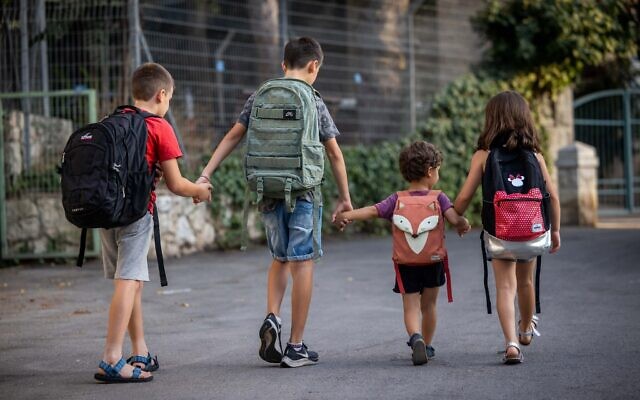
Israeli kids wear school bags ahead of the first day of school outside their home in Jerusalem on August 31, 2022, ahead of the opening of the secular state education system’s academic year. (Yonatan Sindel/Flash90)
This might be a successful way forward. But there’s some chance that a clever, ambitious political left can do better. The cultural-religious-ethnic divides are fundamental, yes, but they are also more porous than they seem in snapshot polls. When it comes to the Ashkenazi-Mizrahi divide, in every single electorate, including the voters for the two Haredi parties UTJ and Shas that are defined by their Ashkenazi or Mizrahi bent, double-digit percentages of voters are no longer willing to tell pollsters whether they are one or the other, in most cases because they are both, the children of mixed marriages.
Nor is religion, so successful a predictor of political behavior, quite as hard and fast a question as the simplistic categories of pollsters might suggest. The line that divides the religious-Zionist from the Haredi has blurred, producing a hardal community, a word that combines the Hebrew terms for ultra-Orthodox and religious-Zionist. This porousness drove some Haredi voters to Ben Gvir on Tuesday.
Similarly, the “secular” Israeli tends to be a more traditionally minded animal than his or her Western counterpart. Families are larger, birthrates higher, and religion-based rituals more widespread among secular Israelis than secular Europeans. Much of everyday Israeli life, even the most prosaic elements like the calendar or the country’s geography, is tied in some way to religious ideas or traditions. A French-style secularism like Fruman’s may not be a sustainable political model even among the secular. In this, too, Israelis, including on the left, are closer to the Middle Eastern societies from which most Israeli Jews hail than to the European progressive politics to which the Israeli left often feels it belongs.
At the moment, the future belongs to the tribes that are producing more children. But the lines may be blurring. A left serious about shaping the Israeli future must reorient itself to take advantage of these changes.
It is tempting to turn to sackcloth and ashes and conclude that the world is ending. It is, indeed, the expectation in the age of Twitter and TikTok.
But there remains a large liberal Israeli political camp. Beginning with the emergence of Kadima in 2006, an Israeli “center” grew to fill the vacuum of the shrinking left, largely by defining itself as non-left and mostly avoiding attempting to resolve the Palestinian impasse. This replacement suggests the left’s problem is not as apocalyptic as its doomsaying spokespeople like to think. The left’s most basic failure is simple: Its venerable institutions, heirs to political structures dating back to before the founding of the Israeli state, no longer correspond to significant social or political realities on the ground.
Had Meretz and Labor been less concerned with their own institutional success and more with the way the voters themselves think, they would have arranged themselves differently in the runup to last week’s elections. Had the left run on Tuesday as a bloc unified along the lines of voters’ fundamental political impulses — as the right did — Netanyahu would likely now be trying to explain to his voters why they must back him for a sixth attempt.
No comments:
Post a Comment